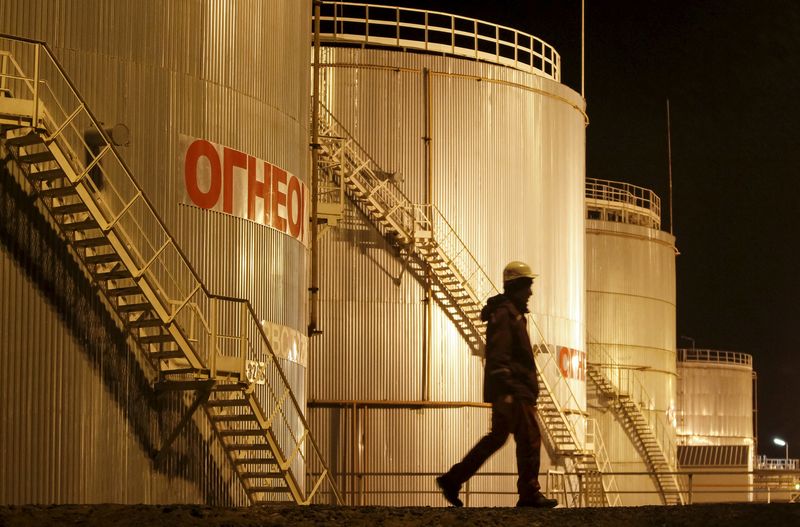By Barani Krishnan
Investing.com – The Chinese seem to have taken control of the narrative on the trade war, saying they are rolling back tariffs with the U.S., delighting bulls across markets, including oil.
Prices of West Texas Intermediate, the benchmark for New York-traded crude, jumped more than 2% at Thursday’s session highs, while London’s Brent, the global gauge for oil, rose more than 1%. On Wednesday, oil prices fell on suggestions that even the first phase of a trade deal might be delayed until December.
In Thursday’s session, WTI settled up 80 cents, or 1.4%, at $57.15 per barrel. The U.S. crude benchmark dropped 1.5% on Wednesday after gaining 5.6% over three previous sessions.
London’s Brent crude rose 55 cents, or 0.9%, to settle at $61.74. It fell 2% a day ago to cut short a previous three-day rally of 4.5%.
Chinese Commerce Minister Gao Feng said earlier on Thursday that Beijing and Washington have agreed to phase out their more than year long tit-for-tat tariffs. Canceling tariffs is vital to the first phase of their trade agreement, which both sides have agreed to do as negotiations progress, he said.
Gao’s comments came ahead of any tweet on the matter from Donald Trump, and he also did not respond to the remarks from Beijing, which was unusual for the U.S. president. Media reports on Wednesday said the Trump administration was having difficulty figuring out how to hold Beijing accountable for its commitments should the president and his Chinese counterpart Xi Jinping sign a deal in the coming weeks.
But markets rallied anyway on Gao’s remarks, with all the three major indexes on Wall Street hitting record highs.
“The better U.S.-China headlines are creating underlying support for crude oil,” Olivier Jakob of Zug, Switzerland-based oil risk consultancy PetroMatrix, said. “We have no doubt that the White House will pump the headlines for the end-week print on the stock market.”
“But WTI is still in the position of having to prove that it can break away to the upside of the 200-day moving average.”
Jakob said the U.S. crude futures benchmark had to clear resistance at $58, while Brent had to cross $63.
